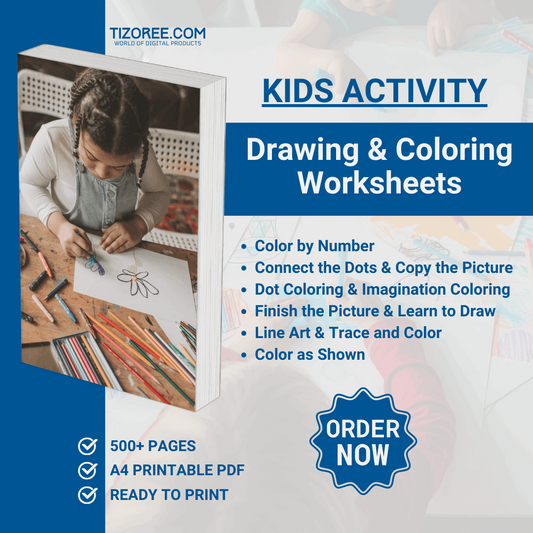Simple Activities For Kids: Surprise Your Child With Magic Colours
Share
Kids are naturally curious and love surprises. One of the best ways to engage their imagination is through magical activities that introduce them to the wonders of color. Using simple materials, you can create fun and educational experiences right at home.
These activities will not only entertain your child but also spark their interest in science and creativity.
What You Need
Before diving into the activities, gather the necessary materials. You don't need any complex tools or ingredients. Here’s a simple list to get you started:
- Food coloring
- Clear plastic bottles
- Water
- Paper towels
- Small cups
- Dropper or pipette
Having these items on hand will prepare you to create colorful surprises for your child. The best part? All these materials are easily accessible and affordable.
Activity 1: Color Mixing Magic
This first activity is all about mixing colors. It’s a fun and hands-on way for children to learn about primary and secondary colors.
Steps to Create Color Mixing Magic
- Fill three clear plastic bottles with water.
- Add a few drops of red food coloring to the first bottle.
- Add blue food coloring to the second bottle.
- Add yellow food coloring to the third bottle.
- Using a dropper, mix different colors in a small cup.
- Observe the color changes as you mix!
As your child mixes the colors, explain how primary colors combine to create secondary colors. This activity not only teaches color theory but also enhances fine motor skills.
Activity 2: Color Changing Flowers
Next up is a fascinating experiment that showcases how plants absorb water. This activity will leave your child amazed as they watch white flowers transform into vibrant colors.
Materials Needed
- White flowers (like carnations)
- Food coloring
- Water
- Vases or cups
Steps to Create Color Changing Flowers
- Fill vases or cups with water.
- Add several drops of food coloring to the water.
- Place the white flowers in the colored water.
- Observe the flowers over the next few hours.
As the flowers absorb the colored water, they will begin to change color. This is a great opportunity to discuss how plants drink water and how colors can travel through them.
Activity 3: Magic Color Bottles
This activity focuses on creating a visual delight that your child can enjoy for days. It’s simple yet effective in teaching about layers and density.
Materials Needed
- Clear plastic bottles
- Water
- Food coloring
- Vegetable oil
Steps to Create Magic Color Bottles
- Fill a clear plastic bottle halfway with water.
- Add a few drops of food coloring to the water.
- Carefully pour vegetable oil into the bottle until it is almost full.
- Seal the bottle tightly and shake it.
- Observe how the colors separate!
This activity demonstrates the concept of density, as the oil and water do not mix. Your child will be fascinated by the layers of colors and the science behind it.
Activity 4: Colorful Paper Towel Art
For a more artistic approach, this activity combines color and creativity. It’s perfect for encouraging your child to express themselves through art.
Materials Needed
- Paper towels
- Food coloring
- Water
- Small cups or containers
Steps to Create Colorful Paper Towel Art
- Cut the paper towels into strips.
- Fill small cups with water and add food coloring.
- Dip one end of the paper towel strip into the colored water.
- Observe how the color travels up the paper towel.
- Experiment with different colors and combinations!
This activity is not only fun but also a great way to teach kids about capillary action and how colors can spread. The end result will be beautiful art pieces they can proudly display.
Conclusion
Engaging your child in these simple color activities can provide hours of entertainment and education. They are perfect for sparking curiosity and creativity while teaching fundamental science concepts. Plus, you don’t need to be a scientist to make magic happen at home. Get ready to surprise your child with these magical colors!
These activities can be easily adapted for children of different ages. Encourage them to ask questions and explore the science behind what they see. The joy of discovery will make these moments unforgettable for both of you!



